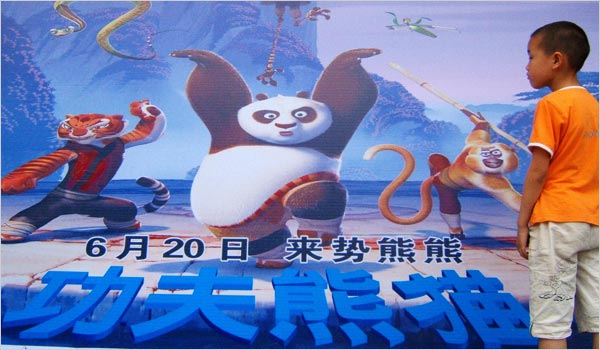I had read about potential controversy that the animated film (which I have yet to see), Kung Fu Panda, might have in China, taking a Chinese cultural icon and commercializing it into an American film. Well, Kung Fu Panda was released in China recently – and guess what? it’s a hit. Now some Chinese are asking themselves, “Why can’t we make such popular films?” as reported in The New York Times’ “The Panda That Roared“:
“A few weeks ago, when the movie opened in China, there was already a call for a boycott — on the grounds that foreigners had lifted one of China’s most precious symbols, the panda, and were using it for their own profit. The boycott never got off the ground, and “Kung Fu Panda” was an immediate box office hit. In the last few weeks the movie has provoked a deeper discussion, even a degree of soul-searching and critical self-examination of the sort that China, which has an amazing mix of ambition, self-confidence and insecurity, goes through from time to time. The main question being asked is: How could Western filmmakers have used Chinese themes to create such a brilliant animated movie with such widespread appeal to the Chinese themselves? Why, in other words, doesn’t China itself seem to be able to use its rich traditions to such brilliant cinematic and commercial effect?””
Some of the reasons are that China doesn’t have as big or historically strong animation market and industry like the United States. However, the broader questions brought up by some Chinese is the constrictive atmosphere of cultural and artistic freedom that China doesn’t enjoy. That’s not necessarily a surprise. I’m sure that in America, we take for granted our freedom of speech which leads to quite an atmosphere of freedom of expression and creativity.
- Excited
- Fascinated
- Amused
- Disgusted
- Sad
- Angry









